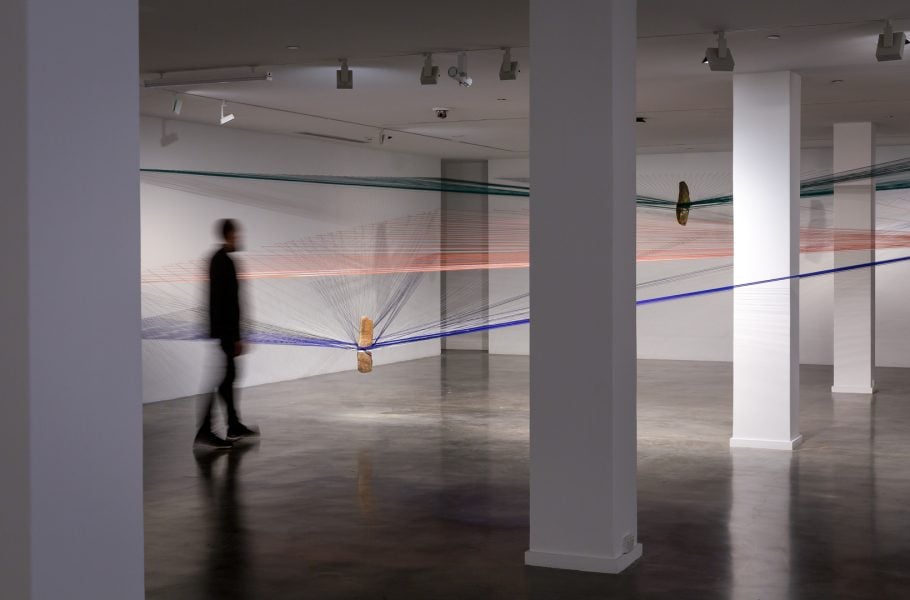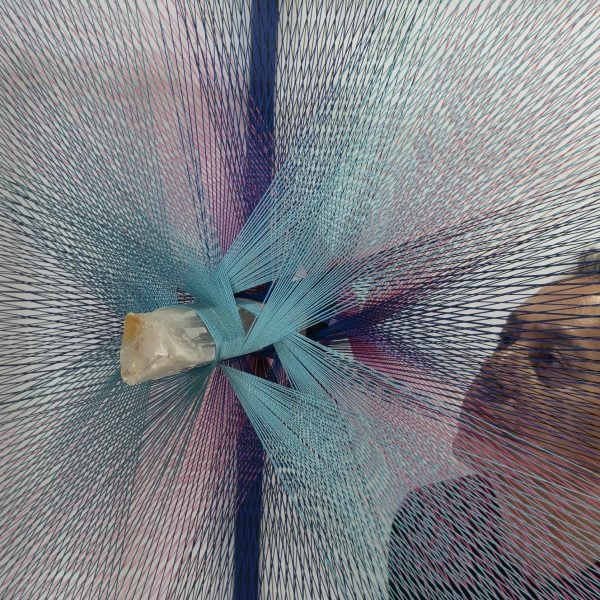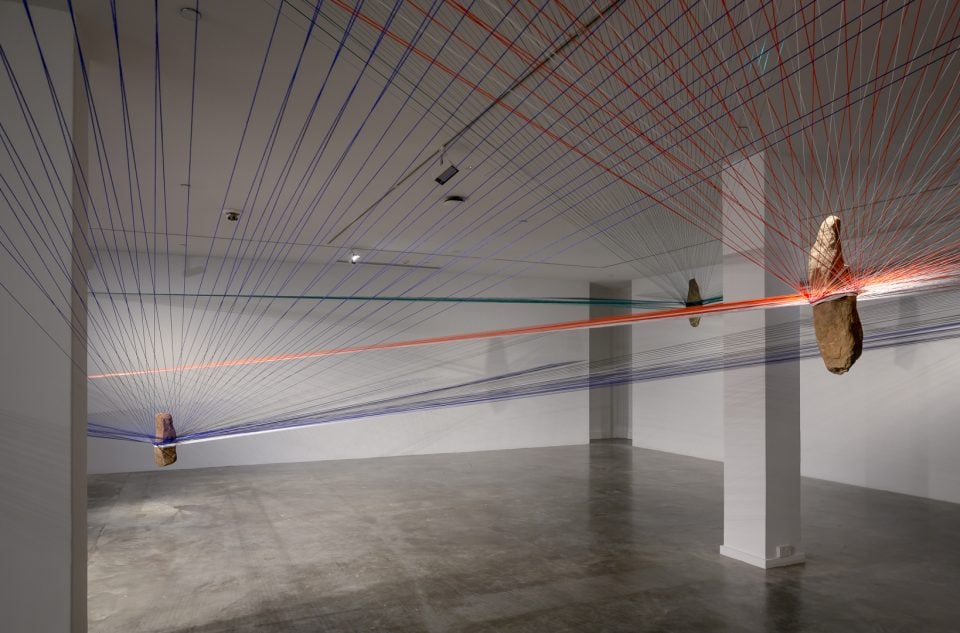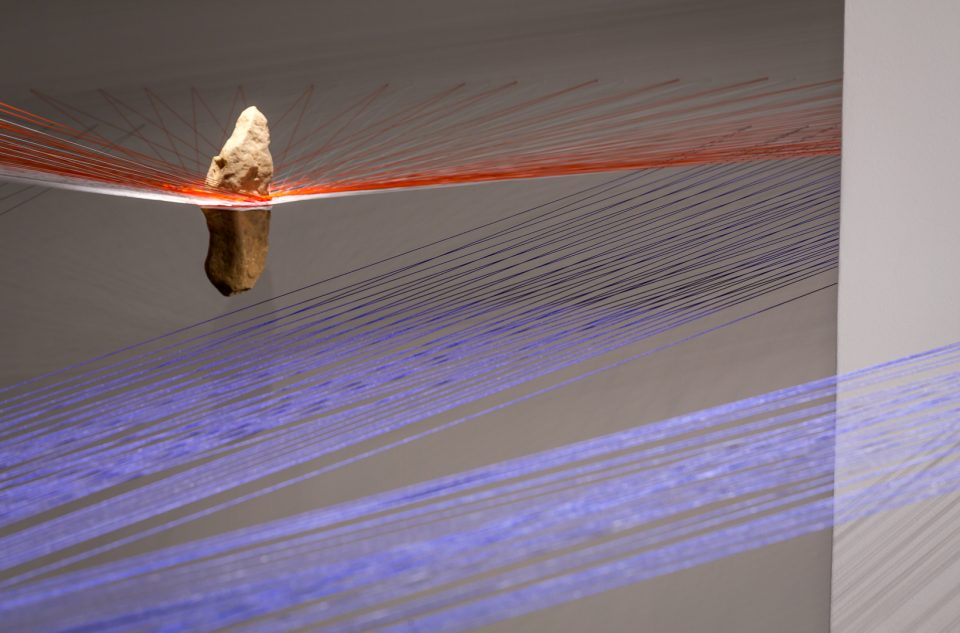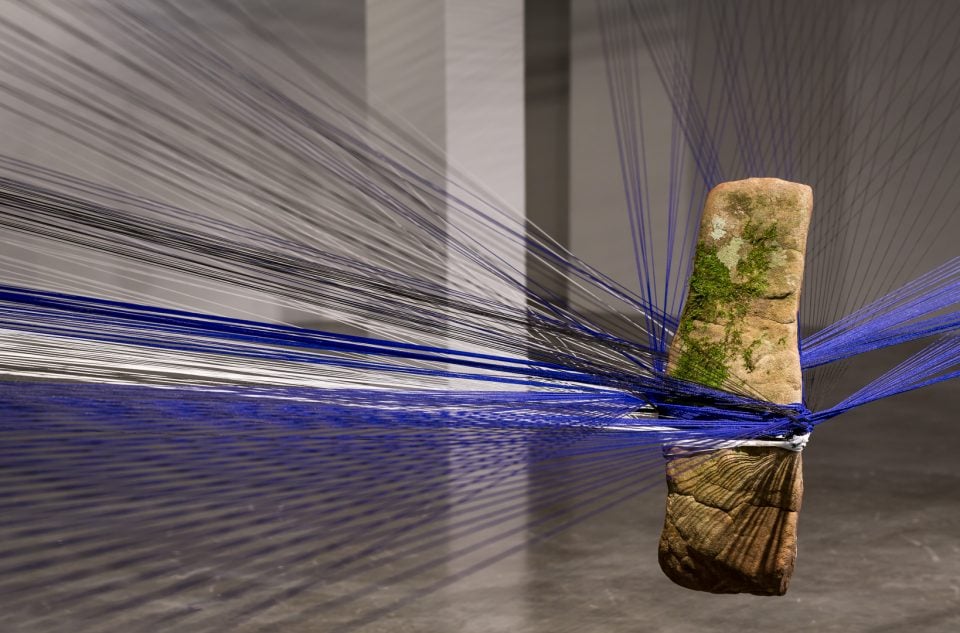Lost Paradise: Milton Becerra
Patricia Masset Paredes, 2021
Milton Becerra’s multidimensional work Lost Paradise has been especially commissioned for rīvus, 23rd Biennale Sydney. This large installation continues his long-time investigation into the relationships between planes, volumes, and tri-dimensional spaces, begun in the 1970s as a search for connections between the individual and the natural environment.
His artistic practice is based upon documentary research and field expeditions, to achieve “forms that come from space-time sources, as diverse as they are distant, that converge in a relation to each other and reflect the prodigious framework of the universe“. Becerra links a wide array of references to his contemporary proposals, such as the past of the Americas, theories of quantum physics and stories of creation linked to ancient tools.
Lost paradise: a site-specific work.
Through the study of nature and its mathematical structure, Milton Becerra turns stones into vectors for the projection of visual energy, establishing a central source that radiates and expands in all directions, inhabiting space. In the interventions carried out in nature, the lines made with natural fibres resemble luminous rays. These threads are the structural elements holding the stones, which appear to levitate as central points within the mass of energy, and accordingly, central points of our gaze. The lines that radiate from them simulate orbits that create vibrations and subtle sounds.
In his beginnings, Becerra was dedicated to the exploration of colour, and early on he incorporated pre-Columbian and Indigenous references in his work. For the past 30 years he has combined a wide range of materials including semi-precious stones, quartz, fragments of pre-Columbian ceramics, natural and industrial fibres, wood, copper, metal, and less conventional media such as water, light and sound. In 1992 he was invited to participate in the exhibition ‘Arte Amazonas’ on the occasion of the First United Nations Conference on the Environment. He is considered a precursor of Land-Art in Venezuela and has promoted ecology in art.
Lost Paradise – Vibrational Energy H2O, Sydney, 2022
rocks and nylon fibres, site specific installation
Courtesy the artist
Commissioned by the Biennale of Sydney with generous assistance from the Embassy of France in Australia and l’Institut français
Milton Becerra’s art is informed by ancestral stories, natural forms (such as the elongated hanging nests woven by birds in the Amazon forest), traditional objects like chinchorros (Indigenous string hammocks), and Venezuela’s tradition of geometric abstraction, with its interest in grids, optic phenomena, and movement. Becerra is interested in the mathematical structure that underpins nature, and in the sacred geometry and energy of the universe.
Using materials like stone and string, he creates site-specific installations in which large rocks hover in space, their weight sustained by myriad threads attached to the walls. These drawings in space evoke the energy emanating from the natural world. The threads, in constant tension, subtly vibrate creating a humming soundscape.
‘The superimposition of lines by the repetition of a gesture that I have called ‘Eurythmy’, is an action that creates an ‘energy field’ that is centred on the stones and extends through them embracing their surroundings, to infinity.’ – Milton Becerra
